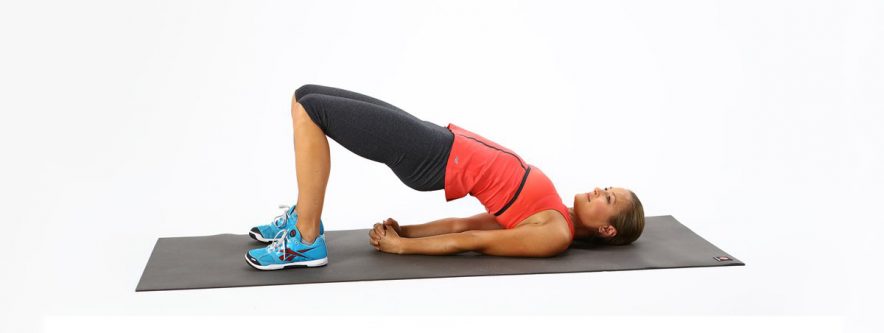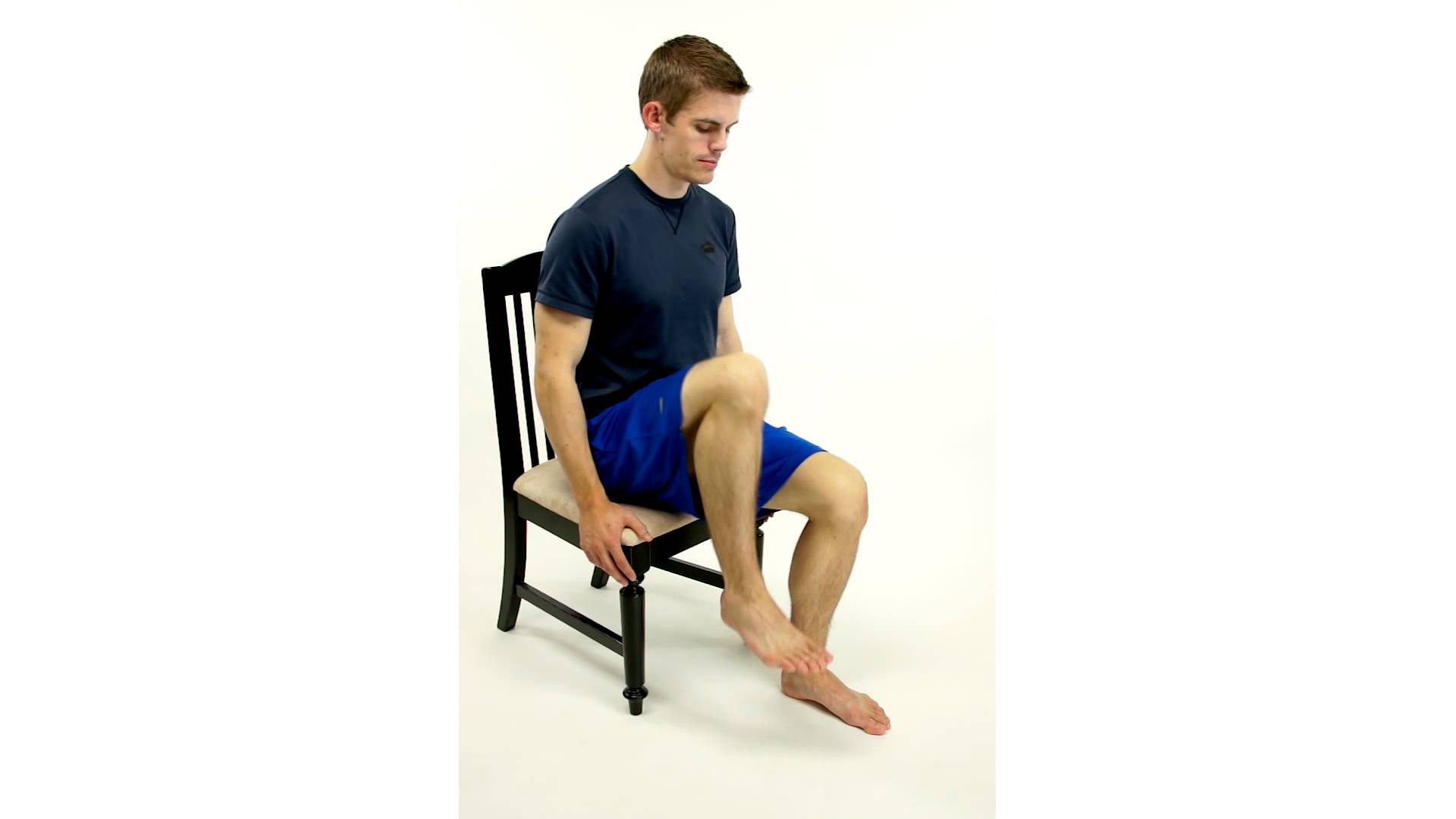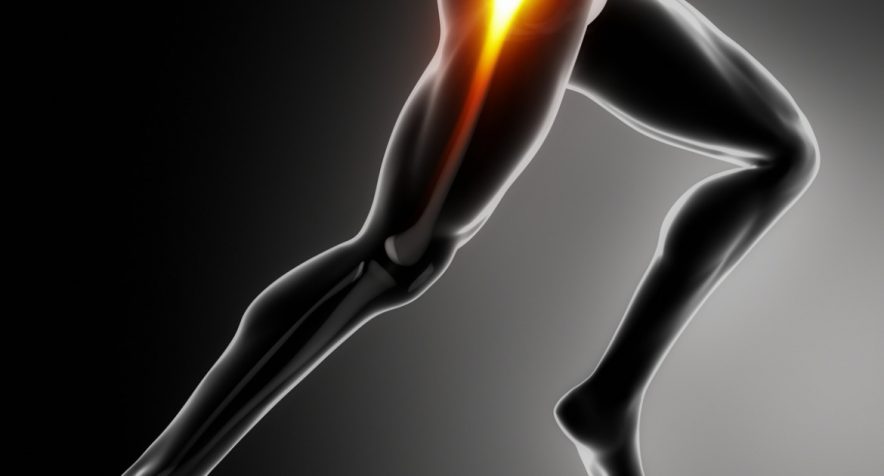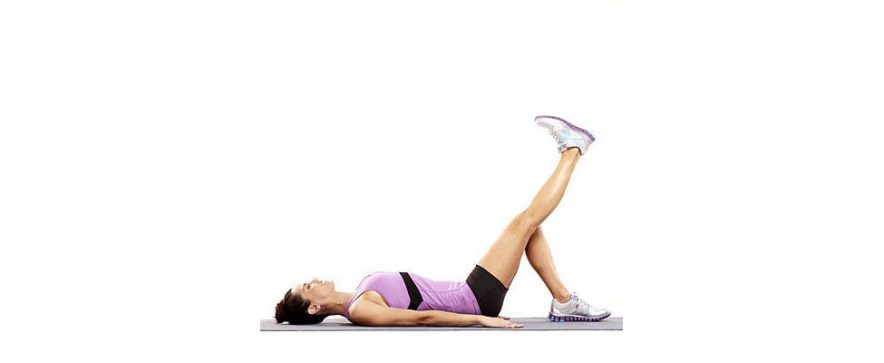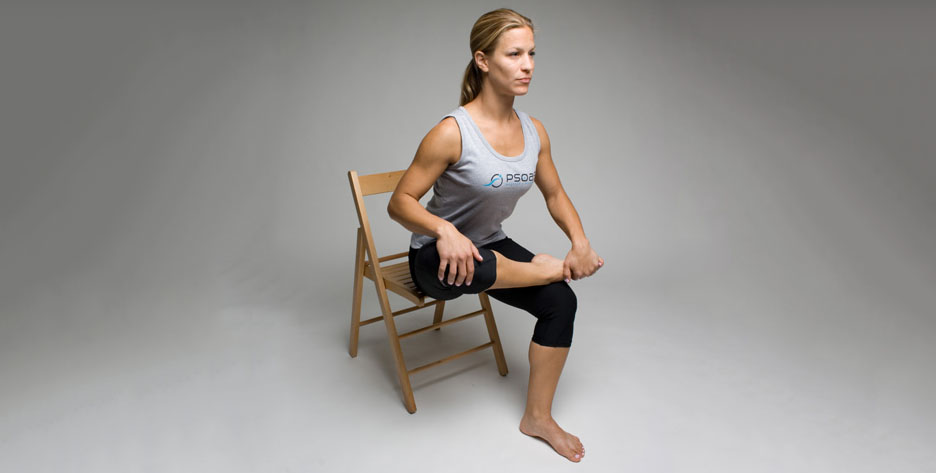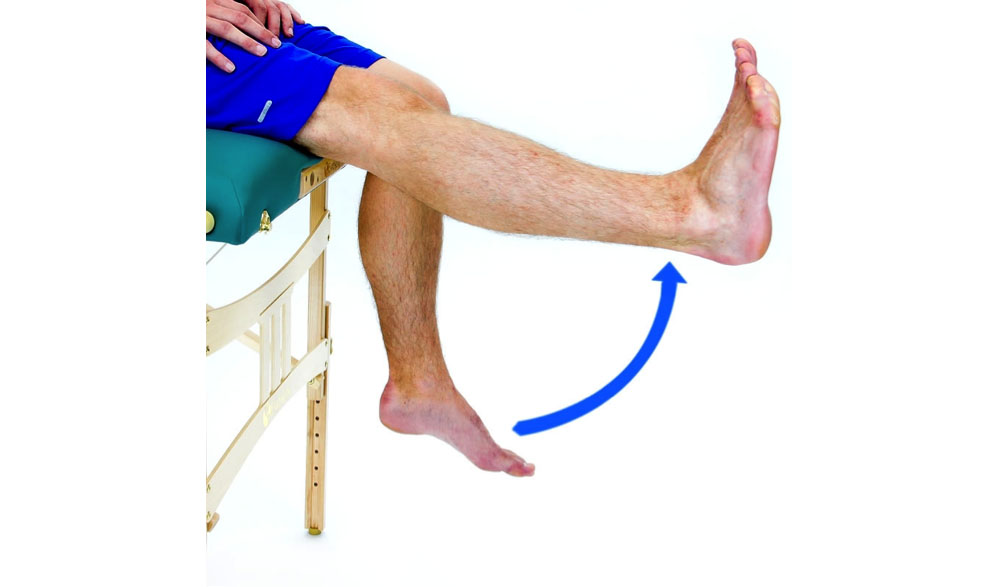
Brooklyn Physical Therapy News- Evolve NY
5 Hip Movements to Help Strengthen and Prevent Pain
Hip pain is something that affects up to 1 in 10 Americans, but there are some exercises that can help almost anyone ease or eliminate pain.
Hip pain is something that affects up to 1 in 10 Americans, but there are some exercises that can help almost anyone ease or eliminate pain.
Strengthening Exercises
Supine Bridges
Begin lying on your back with your arms resting at your sides, your legs bent at the knees, and your feet flat on the ground. Tighten your abs and slowly lift your hips off the floor into a bridge position, keeping your back straight and in a neutral spine.
Seated Marching
Begin sitting upright in a chair with your feet flat on the floor. Keeping your knee bent, lift one leg and lower it back to the ground, then repeat with your other leg. Continue this movement in a marching motion while alternating between legs.
Clamshells
Begin lying on your side with your legs bent to 45 degrees and feet together. Lift your top knee upward while keeping your feet together, then lower it back down and repeat.
Prone Hip Extension
Begin by lying on your stomach with both legs stretched straight behind you. Slowly lift one leg upward as far as you can without arching your low back, then lower it back to the starting position.
Sidelying Hip Abduction
Begin by laying on one side, and slowly lift your upper leg toward the ceiling, then lower it back to the starting position. When finished with one side, lay on the other side and perform the same movement with the opposite leg.
To learn more about the causes and treatments of hip pain, click here.
Common Causes of Hip Pain and What You Can Do To Manage It
The hip is a ball-and-socket joint that is essential to everyday activities, such as walking and going up and down stairs. It is responsible for flexion and extension of the legs. Try the exercises suggested here to help ease pain and prevent future symptoms.
How does the hip work?
The hip is a ball-and-socket joing that is essential to everyday activities, such as walking and going up and down stairs. It is responsible for flexion and extension of the legs. The hip joint has a good range of movement, and is very stable and rarely dislocates, even after high-impact trauma.
The joint is surrounded by a tough, fibrous sleeve, called a capsule, which helps hold the hip and thigh bones together. The capsule is lined by a synovium, which produces a fluid that nourishes the cartilage, lubricates the joint, and allows fluid movement. The hip joint is moved by several muscles that allow you to rotate your hip and walk.
What causes hip pain?
There are many different causes of hip pain, and these depend on the case. Pain can be caused by a sudden trauma, or by repetitive improper movement. One common cause is osteoarthritis, a condition that affects the body’s joints. The surfaces within the joint are damaged so the joint doesn’t move as smoothly as it should. Your doctor will be able to tell you what has caused your pain, but the information and exercises here can be relevant for most cases.
What can be done to help?
Physical Therapy
If your hip pain is affecting your activity and persisting, ask your GP about referral to a physical therapist or physiotherapist. Physiotherapy can help you manage pain and improve your strength and flexibility, which will focus the stress on your muscles, and relieve stress from bones and joints. A physiotherapist can provide a variety of treatments, help you understand your problem, and get you back to normal activities.
Surgery
Surgery may be recommended if your pain is very severe or if you have mobility problems. Your doctor will discuss what the surgery may involve, as these usually are determined on a case-by-case basis.
What can I do to help myself?
Lose Weight
If you’re overweight, losing weight can usually help release pressure from the knee joints.
Exercise
Low impact activities such as swimming, cycling, and using a cross-trainer are particularly good. This helps strengthen the muscles, and allowing the muscles take on more of the stress, and minimizing the joints from absorbing shock.
Summary
Hip pain can be caused by several different things. Whatever the cause, exercise and keeping to a healthy weight are always good objectives, as these can help reduce symptoms.
You can take painkillers to ease the pain. Taking painkillers can also help you stay active without causing extra pain during/after exercise.
Try the exercises suggested here to help ease pain and prevent future symptoms.
Click here for more information about physical therapy for hip pain
6 Knee Strengthening Exercises You Can Do Right Now
Knee pain is something that affects up to 1 in 5 people, but here are several movements that can help ease or eliminate pain.
Knee pain is something that affects up to 1 in 5 people, but here are several movements that can help ease or eliminate pain:
Stretching Exercises
Seated Piriformis Stretch
While sitting in a chair, cross your leg with the ankle of one foot on the knee of the other. Next, pull the top knee upward towards your opposite shoulder for a stretch.
Seated Hamstring Stretch
While seated, rest your heel on the floor with your knee straight and gently lean forward until the stretch is felt behind your knee/thigh.
Strengthening Exercises
Knee Extension/Long Arc Quadricep
While seated with your knee in a bent position slowly straighten your knee as you raise your foot upward as shown.
Laying Straight Leg Raise
While laying (or for an easier alternative, do this while sitting), raise up your leg with a bent straight knee. Keep the opposite knee bent with the foot planted to the ground.
Standing Hip Abduction
While standing, raise your leg out to the side. Keep your knee straight and maintain your toes pointed forward the entire time. Use your arms for support if needed for balance and safety.
Squats
Stand with feet shoulder width apart, and in front of a stable support for balance assist if needed, bend your knees and lower your body toward the floor. Your body’s weight should mostly be directed to the heels of your feet. From there, return to a standing position. Knees should bend in line with the 2nd toe, and shouldn’t pass the front of the foot too much.
To learn more about knee pain, click here.
About Your Knee Pain and How to Reduce Symptoms
The knee joint is where the thigh and shin bones meet. The end of each bone is covered with cartilage, which allows the ends of the bones to move against each other with minimal friction. The surfaces within the joint can be damaged so that the joint doesn’t move as smoothly as it should. Your doctor will be able to tell you what has caused your pain, but the information and exercises here will be relevant for most cases.
How Does the Knee Work?
The knee joint is where the thigh and shin bones meet. The end of each bone is covered with cartilage, which allows the ends of the bones to move against each other with minimal friction.
The knee joint has two extra pieces of cartilage called menisci, which spread the load more evenly across the knee. The knee joint is held in place by four large ligaments. These are thick, strong bands which run within or just outside the joint capsule. Together with the capsule, ligaments prevent the bones from moving in the wrong direction or dislocating. The thigh muscles (quadriceps) also help to hold the knee joint in place.
What Causes Knee Pain?
There are many different causes of knee pain. Overuse, a knee injury, supporting muscle or ligament trauma, or a common cause known as osteoarthritis, a condition that affects the body’s joints. The surfaces within the joint can be damaged so that the joint doesn’t move as smoothly as it should. Your doctor will be able to tell you what has caused your pain, but the information and exercises here will be relevant for most cases.
What can be done to help?
Physical Therapy
If your knee pain is affecting your normal daily activity and is persisting, ask your GP about referral to a physical therapist. A physical therapist, or physiotherapist, can provide a variety of treatments, help you understand your problem better, and get you back to your normal activities.
Surgery
Surgery may be recommended if your pain is very severe or you have mobility issues. Your doctor will discuss with you what the surgery may involve.
What can I do to help myself?
Lose Weight
If you’re overweight, losing weight can usually help release pressure from the knee joints.
Exercise
Low impact activities such as swimming, cycling, and using a cross-trainer are particularly good. This helps strengthen the muscles, and allowing the muscles take on more of the stress, and minimizing the joints from absorbing shock.
Summary
Knee pain can be caused by several different things. However, whatever the cause, exercise and keeping to a healthy weight can reduce symptoms and have the potential to cause a multitude of other physical and mental health benefits.
You can take painkillers to ease pain. Some find that taking painkillers before exercise can help them to remain active without causing any additional pain.
Try the exercises suggested here to help ease pain and prevent future symptoms.
Click here for more information about physical therapy for knees
Why Evolve?
Physical therapy is just one of the many important aspects of overall health, and ranges from treating long-term nagging pains to short-term acute pains. We pride ourselves on our commitment and attention to detail, and we find that our patients and clients also do best when they prioritize their treatment.
Why we do what we do
Physical therapy is just one of the many important aspects of overall health, and ranges from treating long-term nagging pains to short-term acute pains. Our therapists pride themselves on their willingness to help and on their love of watching people grow by getting physically stronger. Each member of our team is dedicated to making therapy pain-free, enjoyable, and productive. We pride ourselves on our commitment and attention to detail, and we find that our patients and clients also do best when they prioritize their treatment.
Our team
Our goal first and foremost is to deliver the best plan of care to you, the patient. We value positivity, and are proud of the connections we’ve made with patients. Evolve is not a cookie-cutter approach to physical therapy, we work hard and encourage patients to do better. We do our best to motivate, educate, and help you grow. We believe in everyone’s inherent power to fix themselves, and we’re here to show you the way and how to do that. Each member of our staff has their own reason for being a part of the team and their own method and style of doing things, and we work hard to ultimately make you better and healthier than you were yesterday. Our team is well-versed and experienced with young athletes as well as older generations, with both inpatient and outpatient treatment centers, and with many different modalities and treatment styles, so you can be sure that we’ll be able to work with you to help you succeed.
What we expect of you
Physical therapy is unique because it does not reward laziness; there is no quick fix, and usually no magic pill. Physical therapy rewards showing up, doing the work, and giving it your all. We encourage patients to prioritize treatments, to come to sessions consistently, and to do prescribed home exercise programs. In physical therapy and physical fitness in general, there is a direct relationship with work done and gains achieved. We will help you and push you to reach your limits and will build a relationship to work together to get you better.
What is Physical Therapy?
Physical therapy is a physical medicine and rehabilitation program with two main goals: To reduce pain and improve/restore mobility. Physical therapy is a very wide profession, and professionals can work with patients from birth to old age in order to heal ailments and injuries or improve overall movement. These fields include health and wellness, and span to fitness as well, and professionals can work with anybody from injured patients high functioning athletes.
WHAT IS Physical TherapY?
Physical therapy is a physical medicine and rehabilitation program with two main goals: To reduce pain and improve/restore mobility. Physical therapy is a very wide profession, and professionals can work with patients from birth to old age in order to heal ailments and injuries or improve overall movement. These fields include health and wellness, and span to fitness as well, and professionals can work with anybody from injured patients high functioning athletes.
Who is a Physical Therapist?
A physical therapist is most commonly a classically trained Master or Doctor, either with an Master’s of Physical Therapy (MPT/MSPT) degree or Doctorate of Physical Therapy (DPT) degree, who can establish a diagnosis and develop and enact a plan of care for a long term recovery. Physical therapists use researched and proven methods based in science and medicine, and work along with medical doctors, primary care physicians, and surgeons to help bring the patient to his or her full potential.
The Goal of a Physical Therapist
The goal of a physical therapist is to properly assess and diagnose an abnormality in movement and to help the patient perform maintenance and to properly move in the future in order to strengthen the area of the body that needs healing. Another goal of a physical therapist and his/her staff is to develop a long-term relationship with the patient and to create an environment that fosters growth and understanding, which will encourage health and wellness and a speedy recovery.
On and Off the Field
Physical therapy doesn’t just happen in the office. It is important to see a professional at least once a week (and in some severe cases up to twice a day 6 times a week), but in most cases, the physical therapist will give the patient some exercises to do at home, and it is important for the patient to keep up with their healing or training regimen to achieve a full recovery as quickly and painlessly as possible.
Welcome to the Evolution
Based in Brooklyn, Evolve Physical Therapy has been treating patients for over six years and has seen people from all walks of life come through our doors. The ailments that we have addressed are just as diverse as the customers we have seen, but the one underlying commonality among all of them is a desire to change their habits to promote better health and speed recovery.
Welcome to the Evolution
Based in Brooklyn, Evolve Physical Therapy has been treating patients for over six years and has seen people from all walks of life come through our doors. The ailments that we have addressed are just as diverse as the customers we have seen, but the one underlying commonality among all of them is a desire to change their habits to promote better health and speed recovery. This has led us to develop our Fit For Life program.
Fit For Life is more than physical therapy. It’s about creating a healthy lifestyle for all people, client or not. With the proper motivation and guidance, we all can be the best version of us that there is. We don’t need to run a marathon or become body builders overnight, but take those important key steps to modify our lifestyles toward a fitness goal. This blog will be dedicated to that pursuit as well as managing pain and the underlying injuries therein. We hope you come by often and check our posts out or even sign up for our newsletter and get monthly updates to your inbox. See you soon!



